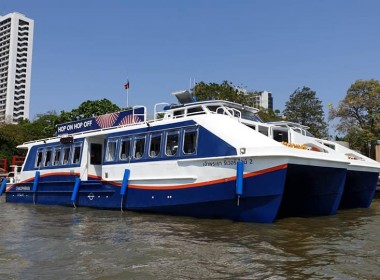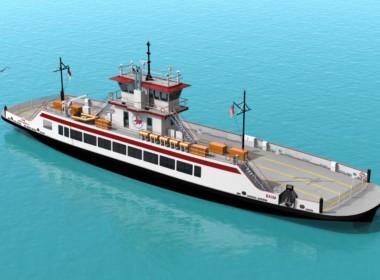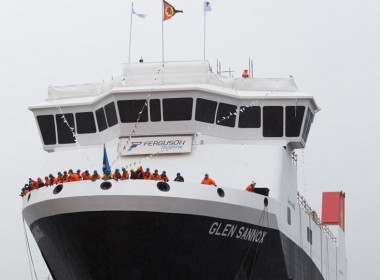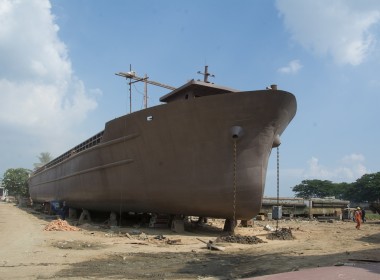FEATURE | A new ferry network for Tasmania’s Derwent River?

Baird Maritime: What is the situation now in Hobart that brought on the idea?
Incat: Although Hobart traffic congestion is mild compared to Sydney and Melbourne, the historic nature of the CBD area makes catering for the significant increase in vehicle numbers over recent years difficult to deal with. Shortage of city parking and high parking costs add to the attraction of a ferry system.
Traffic studies have suggested both a Derwent River Ferry Service and the establishment of a light rail system on the northern corridor to the city. Neither are yet in the pipeline, however there have in the past few weeks been announcements of funding for yet another study on the light rail, much the same situation as the Derwent Ferries project – numerous studies but to date no hint of a start of service.
The state government has provided Metro Tasmania, the bus provider, with funding for a ferry study and start of service, however Metro say it is only enough for a Monday to Friday peak hours commuter service on one route – Bellerive to Sullivans Cove.
Incat Founder Robert Clifford disagrees with the one route/part-time option – saying, “that just wont work, it needs greater commitment to the idea of a network of ferry routes.”
He has promoted a multi-route, multi-vessel, seven day a week service as the optimal solution. Although an advocate of such a service he is adamant that Incat does not wish to be the operator, but would be supportive.
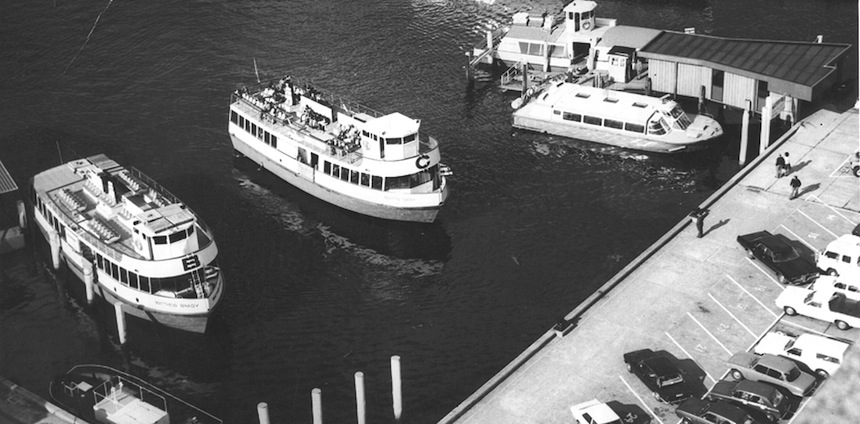
Many Tasmanians recall the ferry service operated across the Derwent in the 1970s, the Sullivans Cove Ferry Company, run by Robert Clifford carried over nine million passengers in the two-year period following the Tasman Bridge collapse.
If traffic congestion is a factor, as a totally different form of transport, do you think potential passengers can easily be convinced to use the proposed service? Has market research been done in this area?
There have been numerous studies over the past two decades, however most studies have only focused on the short Bellerive to Sullivans Cove run that would ease bridge traffic.
The proposal put forward by Robert Clifford outlines a network of floating jetties, up to 16 spread from north to south of the city and on both sides of the river.
The plan suggests mainly smaller commuter ferries that can be operated by one person, offering frequent trips, rather than large ferries operating less frequently. In addition, Robert suggests a couple of larger ferries, with more facilities that can double up to offer tourist trips in the off peak periods.
What is the scope of the potential you see for the initial proposal, both commuter ferry services and tourism services?
The service could start slowly with a few terminals and ferries and gradually add more as it is established.
The advantage of setting up such a system is virtually no impediment to existing traffic during establishment stage as the terminals are floated into position. Contrast that to the years of disruption caused by major changes to road infrastructure.
What is the scope of the potential you see for the longer term, both commuter ferry services and tourism services?
The 1970s tourist ferries were very successful at a time when Tasmania had few tourists compared with the 1.26 million visitors to Tasmania in 2017.
Approximately one quarter of those were international tourists. It only needs a small percentage of the visitors to take a river cruise for a service to be justified.
Obviously the final plan would require a lot of back-and-forth with various stakeholders, but what is your current proposal for meeting this need? What would be the scope of an initial network?
The Clifford proposal was more of an “ambit claim” designed to get the stakeholders talking. Robert Clifford has made it very clear that he would support and encourage any operator wishing to start a service but that he does not wish to run a ferry service.
Robert remains Chairman of Incat and the Incat business is building ships not running a commuter/transport business, however Robert has said publicly that he is prepared to build the first couple of vessels and terminals if requested, and would get some cost recovery via a lease to the operator.
Most stakeholders agree that even if Metro Tasmania (the state’s road transport organisation running bus services) does not actually run a ferry service, it would need to be run with Metro support in that bus services and timetables would ideally collate with ferry services.
Please provide some details of the proposed vessels, including numbers and specifications, power/propulsion, cost etc.
Detailed design has not been completed, and will not be until an operator comes forward with their wish list. Incat envisages that the boats would still run on marine distillate.
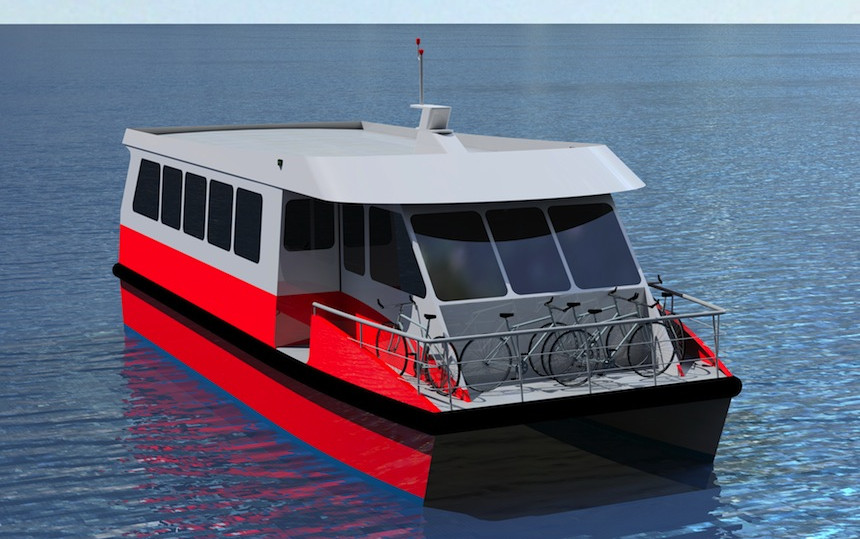
An electric option has been considered, and may be possible in the future, however with the financial model for the small ferries suggests each boat is run by one driver, the batteries currently available cannot run for long enough to operate an efficient day-long service, take a long time to re-charge and even if there were dual sets one person would have difficulty changing heavy batteries quickly.
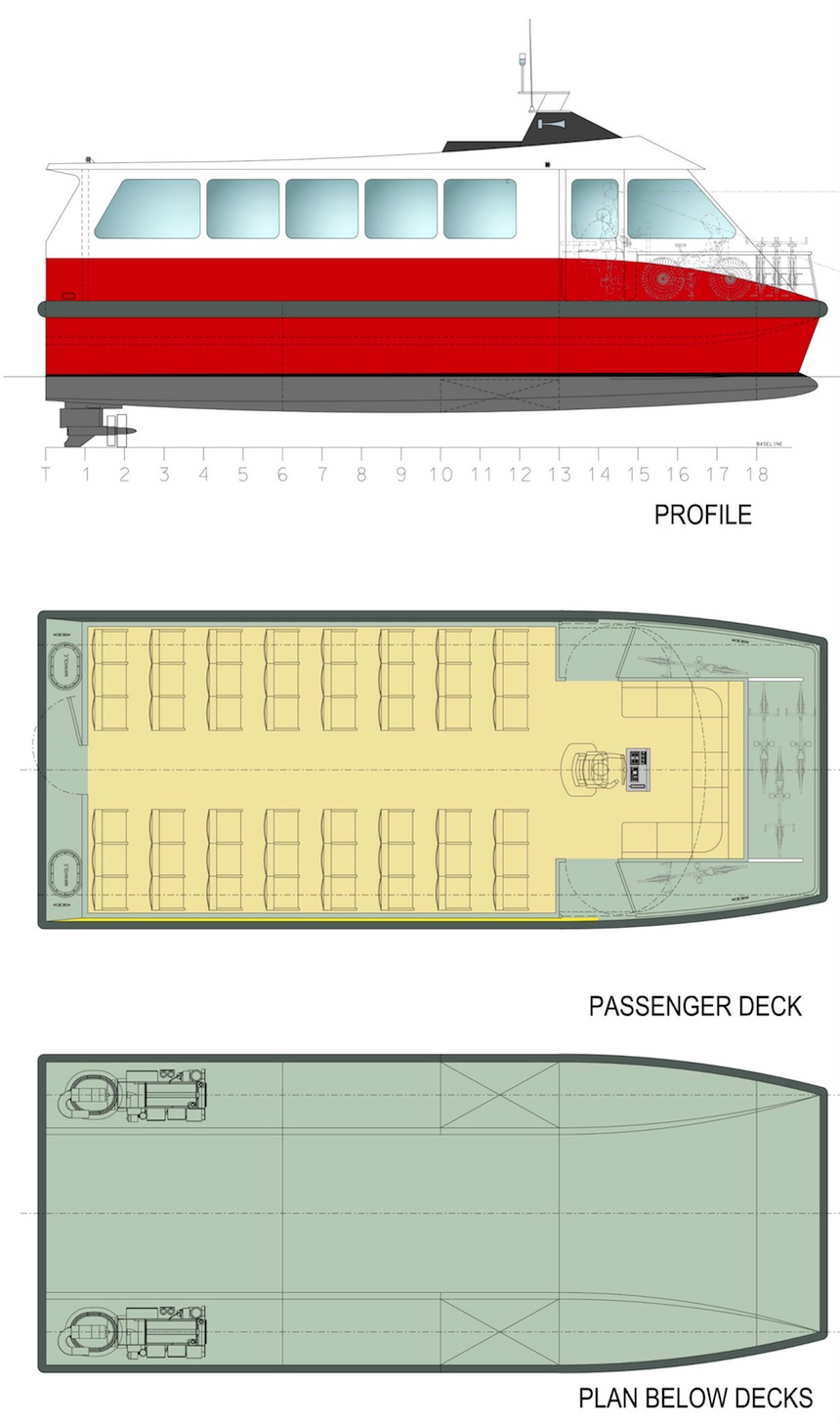
The larger ferries suggested, similar in capacity to the vessels Incat has delivered to Manly Fast Ferries and Port Phillip Ferries, could operate tourist and commuter services, at this stage also operating on distillate.



